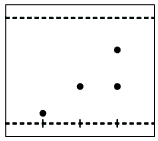
General Announcement (Please read!)
1. It has come to my attention that some students are not clear about certain policies in this course. There is no such policy in this lab course which discourages students from asking questions. The reason why you are here is to learn. This should also result in questions from the the student's side, which are welcome by the teaching assistants and the instructor. However, it is expected that the student comes prepared to the lab section in order to be able to complete the experiment in a timely fashion. The majority of the questions regarding the experiment (theory and practical issues) can be answered during lecture and office hours. A question generally should demonstrate the student's ability to analyze the problem and be as specific as possible in his/her inquiry.
2. In the future, please do not study outside my office (YH3077E). My colleagues in the office suite try to get some work done, and the noise outside is rather disturbing.
3. Reminder: The IR assignment for this quarter is due on 4/28/2006 at 5 pm in YH3077E. No late assignments will be accepted, so make sure that you turn it in on time.
ATTN: answers to the below questions are due at the start of your lab period; these answers should be part of your pre-lab write-up.
1. Referring to the Aldol reaction carried out in the lab, answer the following questions. Show pertinent equations where appropriate.
a. Why does the procedure ask for absolute alcohol in the initial stages of the reaction?
b. What is the function of the ethanolic KOH solution?
c. Why is the reaction mixture refluxed?
d. Which solvent is used for recrystallization in this reaction? Rationalize the choice.
e. How much of the solvent does a student need to recrystallize 0.28 g of crude product?
2. A student isolates 0.55 g of a crude product Y that shows the following solubilities (in g/100 mL) in methanol and hexane.
| Temp (oC) | MeOH | Hexane |
| 0 | 1 | 0.5 |
| 20 | 2 | 1 |
| 40 | 4 | 2 |
| 60 | 7 | 3 |
| 80 | XXX | 4 |
a. Which solvent should he use for recrystallization? Rationalize your choice. Which assumption do you have to make?
b. Assuming the recrystallization is carried out correctly, how much of the pure product would be recovered?
3. While running the following reaction
A + B --> C + D
a student acquires a TLC for his reaction mixture using a plate coated with silica and a mixture of dichloromethane and hexane (4:1) as eluent. He observes the following result

Note: Compound C is not UV-active.
a. Determine the Rf-values for all spots on the plate.
b. What can be said about the progress of the reaction?
c. His neighbor decides to use a solvent mixture dichloromethane and hexane (1:1) as eluent. What would change?
d. What is used to apply the sample to the TLC plate? Explain briefly.